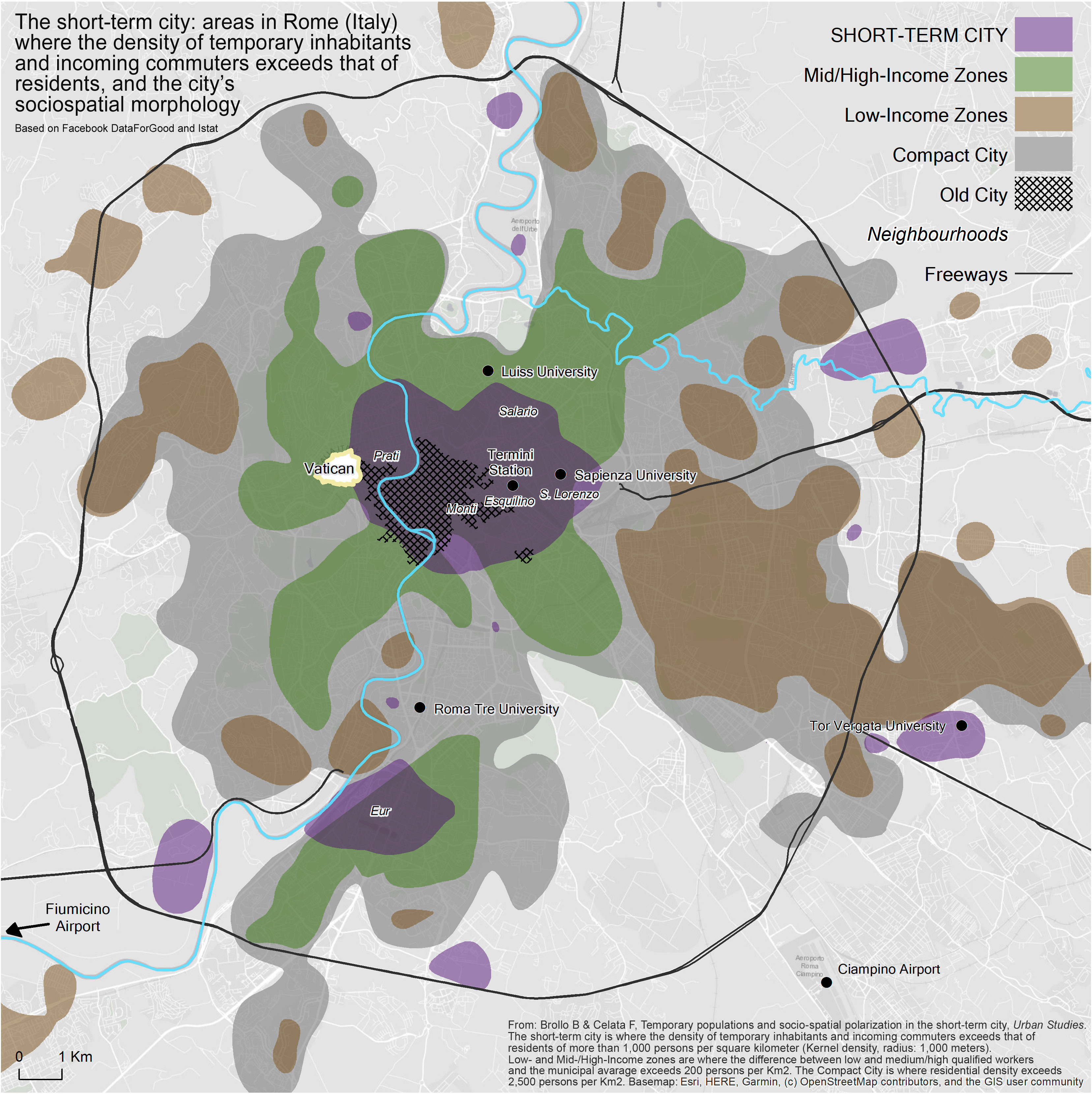Temporary populations and sociospatial polarisation in the short-term city
Blog post by Barbara Brollo and Filippo Celata
- Created
- 21 Dec 2022, 11:48 a.m.
- Author

Figure: The short-term city: areas in Rome where the density of temporary inhabitants and incoming commuters exceeds that of residents of more than 1000 persons per km2 (kernel density, radius: 1 km), and the city’s socio spatial morphology. Based on Facebook DataForGood and Istat.
Big cities attract a variety of temporary populations: tourists, temporary stayers, non-resident students, city-users, second homers, lifestyle migrants, digital nomads, to name a number of commonly cited categories. Social policy concerns about the impact of these inflows on already and increasingly gentrified and unequal cities have been multiplying worldwide. Such implications are typically addressed separately or piecemeal. For example, there have been numerous studies of over-tourism, studentification and/or transnational gentrification. Previous studies therefore have a tendency to miss the opportunity to examine the spatial distribution of temporary populations through an holistic lens. The implications of temporary inhabitants are particularly problematic in the housing market, and in the ‘short-term city’: the urban area where their number exceeds that of permanent inhabitants. These effects, however, extend well beyond a few ‘quasi-tourism bubbles’, contribute to the expulsion of low- and middle-income inhabitants from the city’s most attractive locations, and to sociospatial polarization at the whole city scale.
In our recent article, we stress the need to avoid rigid categorizations of temporary population. Instead, we highlight several similarities in the sociodemographic characteristics of temporary inhabitants: in their urban practices, locational and housing preferences, and in how they contribute to urban change. The Covid-19 pandemic is used as a natural experiment to estimate how various temporary populations distribute spatially within the city of Rome (Italy). The initial Covid-19 lockdowns triggered the return of many, but not all, temporary populations to their place of usual or permanent residence. By drawing on Facebook data – specifically for those users having enabled location tacking – and studying each Monday of April 2020 we were able to examine populate change and spatial distributions. Indeed, the pandemic also offers an occasion to see how dependent cities are on temporary inhabitants and to reflect upon the ambivalence in how they see those populations as either a gain or a burden, something they struggle to attract or as a source of tensions and opposition. Addressing those ambivalences requires careful consideration of both the benefits and costs, and a proper balance between the right to the city of both permanent and temporary inhabitants.
Read the accompanying article on Urban Studies OnlineFirst here.


Comments
You need to be logged in to make a comment. Please Login or Register
There are no comments on this resource.